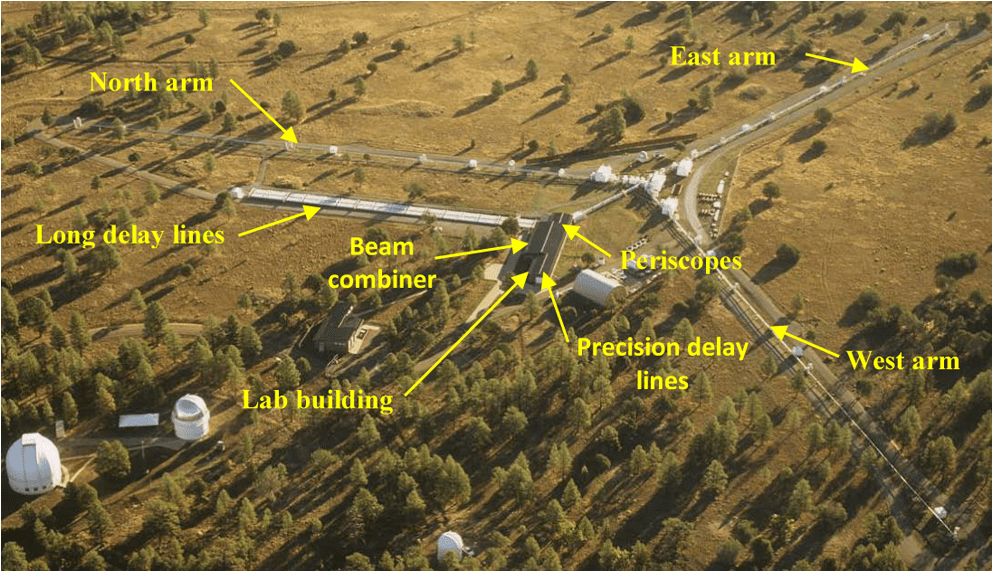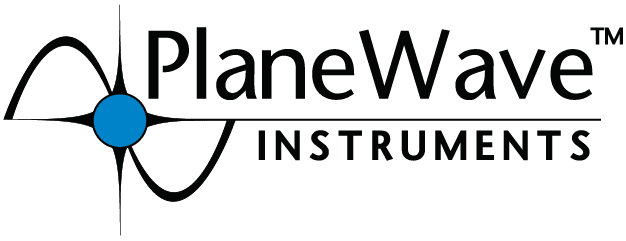New PlaneWave Telescopes Upgrade Major Lowell Observatory Project

 A new array of three PlaneWave 1.0 meter telescopes is at the heart of a major new Lowell Observatory project, supported by a $3.26 million grant from the Naval Research Laboratory (NRL).
A new array of three PlaneWave 1.0 meter telescopes is at the heart of a major new Lowell Observatory project, supported by a $3.26 million grant from the Naval Research Laboratory (NRL).
The Model PW-100 instruments will upgrade the Navy Precision Optical Interferometer (NPOI), located at the observatory in Flagstaff, Arizona. Leading the project, which will investigate exoplanets, take surface images of stars, and catalog the structure of asteroids, is headed by Dr. Gerard van Belle, a veteran astronomer whose long career has been devoted to exploring the sky. “I’ve been doing this work for 25 years,” Dr. van Belle says, “and I’m engaged in ongoing science and development efforts, by linking these telescopes together.”

The new program, called PALANTIR (Precision Array of Large-Aperture New Telescopes for Image Reconstruction), a tribute to the far-sighted stones of J.R.R. Tolkien’s classic Lord Of The Rings trilogy, significantly enhances the observatory’s visual reach. “If I want to look at smaller stars,” Dr. van Belle explains, “previously, I couldn’t do it. The new telescopes do more than I could possibly do before.”
The upgrade will allow the project’s 6 researchers to make new discoveries, and learn more about our universe. “It’s an exciting time,” the astronomer relates, “We’ll be able to look at many new stars, and we’ll have the ability to resolve even more new planets.”
The Navy Research Laboratory (NRL) is joining the Lowell Observatory in its work, which Dr. Van Belle expects will “show us more stars, more accurately,” than the earlier, small 5” telescopes which were previously in use. By linking a group of telescopes together to create a bigger, “synthetic” telescope, the observatory can see detail a single instrument is unable to pick up. This higher resolution, Dr. Van Belle reflects, “are the remedy the new telescopes can give us.” The upgrade, to be carried out over 24 months, is being done in parallel with a five-year advanced techniques development program, which will greatly expand the facility’s utility in performing these investigations.
The Lowell Observatory occupies an important place in the history of modern astronomy, as the brainchild of pioneer Percival Lowell, who founded the site in 1894. The facility has made innumerable contributions to the art and science of astronomy, most recently the addition of the 4.3 meter Discovery Channel Telescope (DCT), whose stunning imagery is available to researchers and students all over the world.
With the advent of the PALANTIR project, Lowell is poised to begin a dynamic new chapter in its ongoing story, revealing more of our wondrous heavens to new generations of scientists. “This really is an important upgrade,” Dr. Van Belle says, “and we will have a much more robust capability to see fainter stars.” PlaneWave Instruments is proud to continue its partnership with the Lowell Observatory and NRL, advancing our growing knowledge of what lies within our galaxy, and beyond.
